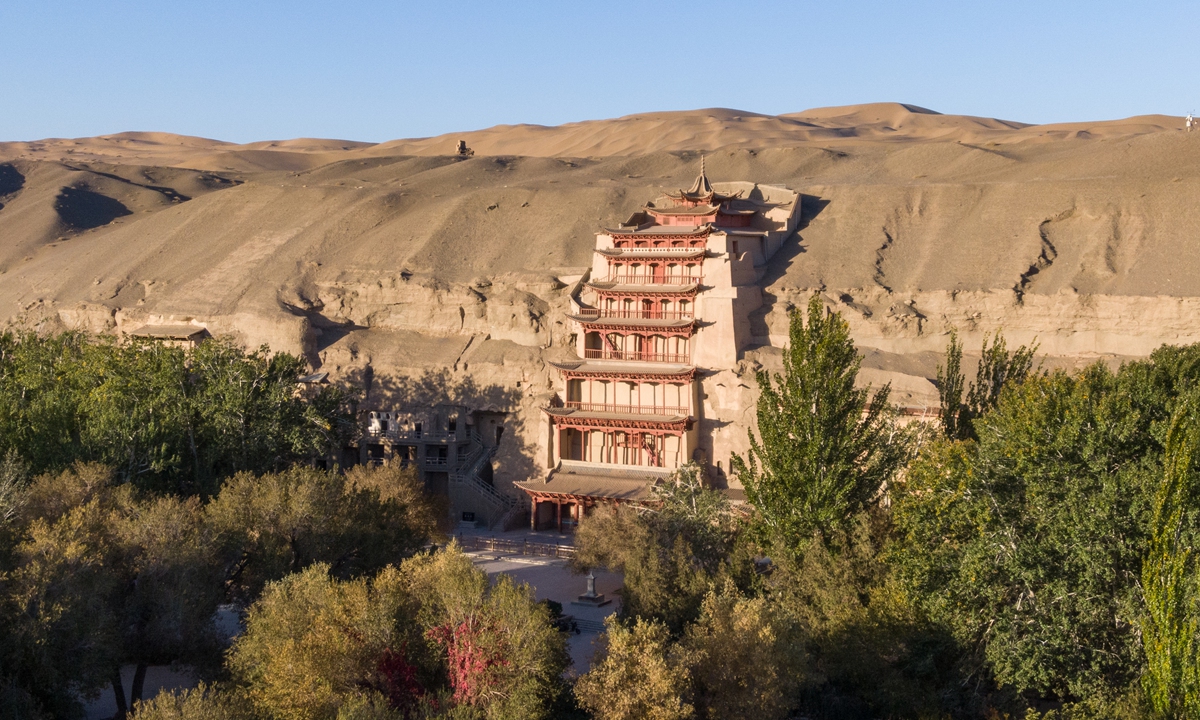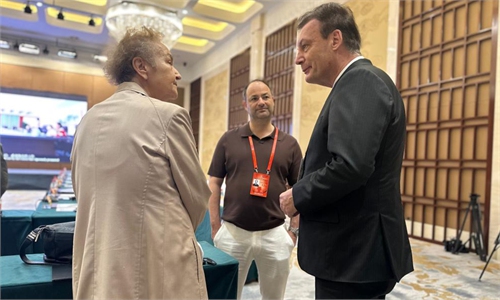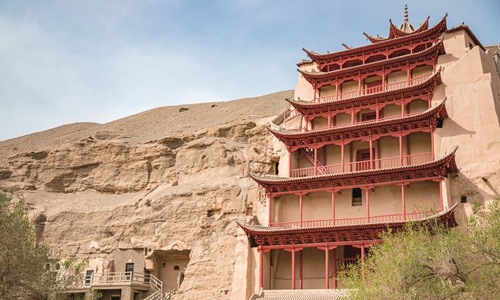ARTS / CULTURE & LEISURE
China to build first national heritage route
Gansu unveils ambitious plan for cultural preservation beyond Mogao Caves

The Mogao Caves in Dunhuang, Gansu Province Photo: Courtesy of the Dunhuang Academy
China's first national heritage route is about to be built alongside the Hexi Corridor, a storied passageway along the ancient Silk Road in Northwest China, following a comprehensive implementation plan for its construction within the next 10 years. The plan was released at a press conference held in Northwest China's Gansu Province on Tuesday, according to the Xinhua News Agency.The plan sets phased goals for 2025, 2030, and 2035, aiming by the end of 2030 to fully establish five model frameworks for heritage protection and tourism development: cultural heritage conservation, natural heritage preservation, protection and exhibition of intangible cultural heritage, an international tourism belt, and international cultural exchange and cooperation. These efforts will lay the groundwork for a replicable and standardized national heritage corridor system.
Stretching roughly 1,000 kilometers, the Hexi Corridor that traverses several cities in Gansu boasts a long history and rich cultural heritage.
"Since Zhang Qian's groundbreaking expedition during the Western Han Dynasty (206BC-AD25), it has served as a vital link connecting the economic and cultural exchanges between the East and the West, fostering the communication and progress of global civilizations. It also forms the historical foundation for the conception and implementation of today's 'Belt and Road Initiative,'" Liu Zheng, a member of the Chinese Society of Cultural Relics, told the Global Times on Wednesday.
Beyond the famed Mogao Caves and the Great Wall, the Hexi Corridor boasts some of the Silk Road's richest geographical and historical treasures, including five UNESCO World Heritage Sites and 59 nationally protected cultural heritage sites. It also contains nearly 300 national and provincial intangible cultural heritage projects, two world geoparks, one national park, eight national nature reserves, and 23 national natural parks. In the Hexi Corridor, cultural and natural heritages complement each other, forming a typical heritage route in China.
During the construction of the national heritage route in the Hexi Corridor, the Jiayuguan section of the Great Wall of Ming Dynasty (1368-1644) and the Dunhuang Mogao Caves emerged as two key cultural heritage sites receiving significant attention.
At the press conference, it was announced that efforts will focus on important cultural heritage sites along the Hexi Corridor, such as representative cave temples, sections of the Great Wall, ancient city ruins, and historic architecture. Six major initiatives, including interpretation of heritage value, the creation of a cave art corridor, the Great Wall frontier corridor, and integrated protection of ancient cities and towns, will be rolled out.
By 2024, digital technology is playing an increasingly important role in preserving the Dunhuang Caves. According to materials sent to the Global Times from the Gansu Provincial Cultural Heritage Administration, substantial progress has been made with the near completion of the second phase of the Mogao Caves Digital Exhibition Center and the Physical Simulation Laboratory for Earthen Sites. Additionally, a batch of projects including cave and mural restoration as well as digital preservation, are being accelerated.
Digital documentation of murals in 295 caves, image stitching for 186 caves, and 3D digital reconstruction of 45 painted sculptures had been completed. High-resolution images for 30 entire caves and over 6,500 Dunhuang manuscripts from a cave for preserving Buddhist sutras have also been made available for international sharing.
Just last month, from May 29 to 31, international scholars, fresh from touring the Mogao Caves Digital Exhibition Center, stepped into a sandy-hued cave theater where statues of Buddhist warriors and bodhisattvas sprang to life during the fourth Dialogue on Exchanges and Mutual Learning among Civilizations held in Dunhuang, Gansu. In the blink of an eye, dancers in flying apsara costumes descended from the ceiling in a spectacle that drew gasps of amazement.
"It was full of surprises," remarked German sinologist Christoph Harbsmeier.
"New characters would suddenly appear, singing and dancing. This innovative artistic expression perfectly blends aesthetic beauty and historical charm."
This echoed the words Zhang Hang, director of the resource planning and rural tourism division at the Gansu Provincial Department of Culture and Tourism, said at the press conference.
"Gansu aims to build Dunhuang into a world-class tourism destination, branding it as 'Dunhuang of the World,' 'Dunhuang for Humanity,' and the 'Cultural Capital of East Asia,'" Zhang noted.
Performances of Silk Road, Flower Rain and A Dream of Dunhuang have also frequently accompanied China's diplomatic and foreign affairs activities, touring countries including the US, France, Germany, Japan, and South Korea.
Meanwhile, the Jiayuguan Great Wall national demonstration zone for cultural relic protection and utilization is also making progress. Efforts to preserve the historical environment of the Great Wall have been coupled with the creation of an exhibition route. This route, complete with integrated service facilities, forms a Great Wall scenic corridor centered on the Jiayuguan Fortress.
At the press conference, He Xiaozu, director of the Gansu Provincial Department of Culture and Tourism, explained that between 2025 and 2035, Gansu will focus on 52 representative cultural and natural heritage sites and 20 nationally recognized intangible cultural heritage items. Projects will span heritage conservation, infrastructure development, tourism planning, and international exchange.




